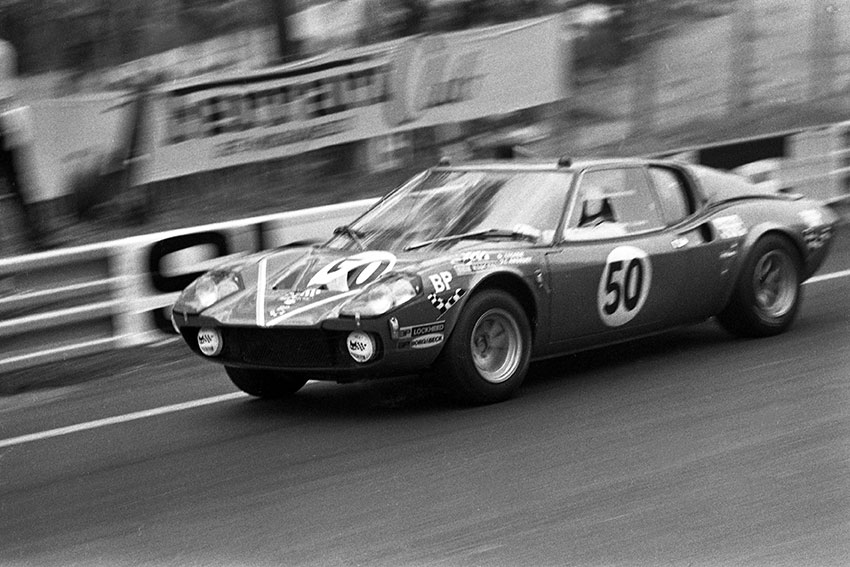
The very first Ligier, the JS1
In 1969, Guy Ligier decided to change status and pass from the role of confirmed driver to that of fledgling racing car constructor. In fact, he wanted to fulfill the dream he had long shared with his great friend and team-mate, Jo Schlesser - “build good cars.” From this resolve was born the JS1. It was the first of a long line and it bore Schlesser's initials who died in the previous year's French Formula 1 Grand Prix.
The Ligier JS1 made its first appearance at the French Motor Show at the Porte de Versailles in October. It arrived at the very last moment as the little GT wasn't ready until a few hours before the inauguration of the show. And it made a big impression in its beautiful orange-red livery.
The aim of the coupe entirely dedicated to competition was to take the fight to the Porsche 911s, Alpines and Dino Ferraris. It followed the classic design for the era: a beam chassis penned by Michel Têtu covered in elegant polyester bodywork designed by Pietro Frua. The first JS1 was powered by a rear mid-mounted 1600 cc straight-4 Ford Cosworth FVA engine. It weighed around 700 kg and was produced in the Abrest workshops near Vichy like the models that would follow it for the next 20 or so years.
Maiden victory at Albi in 1970
The JS1‘s first foray into competition was in the Critérium des Cévennes in November 1969 driven by Guy Ligier - back behind the wheel again - with well-known time keeper, Michèle Dubosc, at his side. Unfortunately, a broken engine bracket put an end to the adventure. The following year the first engine was replaced by a 1790 cc Cosworth FVC. And Guy Ligier scored the JS1's maiden victory at Albi in March on its first outing in the 2-litre European Sports Prototype Championship followed up with a second win at Monthléry in the Coupes de Vitesse in April.
In this era, April was also the month of the preliminary practice days for the 24 Hours of Le Mans. Would the JS1's first outing the Sarthe classic be crowned with success? The Ligier had the number 50 and wasn't the least bit overawed by its rivals or by the deluge that flooded the track! It should be pointed out that Ligier was backed up by a very talented team-mate, Jean-Claude Andruet. But in the eight hour of the race when the car was lying 18th it had to retire due to a broken distributor drive shaft. Its engine was certainly not made with endurance racing in mind!
The team used the summer to modify the car to house its new engine, the V6 from the Ford Capri 2600 RS and its aim was the Tour de France Automobile in the autumn - again without success.
Only one chassis left
As just three JS1s were produced the car was eligible for the prototype category only despite the fact that it was basically very similar to a series-produced GT. Thus, it had to compete against rivals that were much better armed and better run in than it was. After a year it was ready to cede its place to a new GT made by the brand, the JS2. It was inspired by the JS1 and destined for the series production market meaning that it would be withdrawn from the prototype category. But the JS2 fell behind schedule and finally an open sports car, the JS3, replaced the JS1 in 1971.
Today, only one of the three JS1 chassis seems to have survived. It was entirely restored from a wreck discovered in 1999. Since 2004 it has made some rare, remarked upon appearances at exhibitions and races for historic cars.